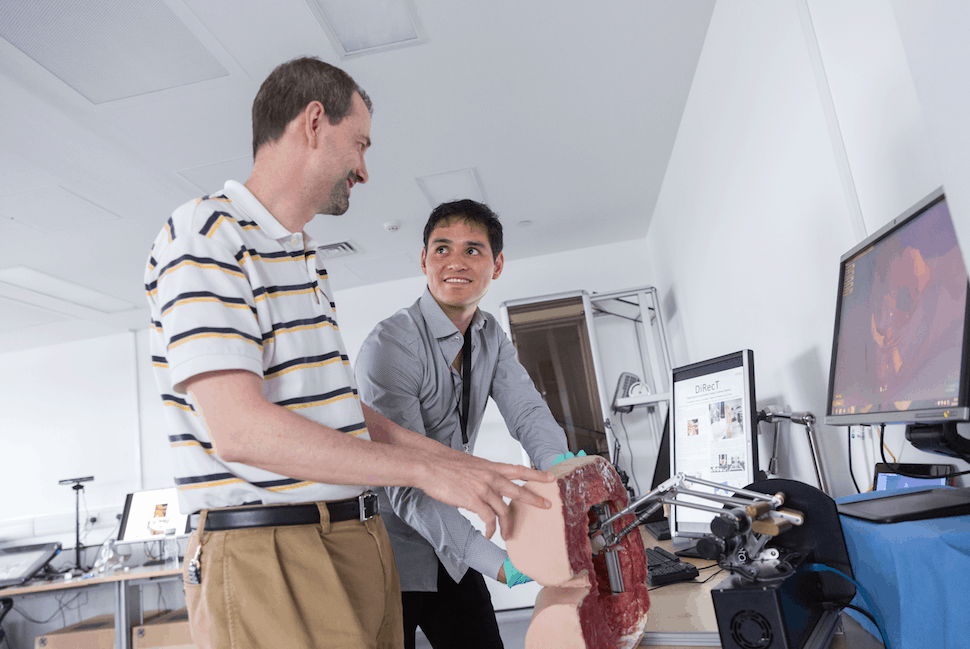
The device has been designed to help medical practitioners carry out accurate rectal examinations by recreating the feel of a rectum, as well as providing feedback on their examination technique. The device, developed by scientists at Imperial College London, contains small robotic arms that apply pressure to the silicone rectum, to recreate the shape and feel of the back passage.
Rectal examinations are necessary to diagnose conditions such as prostate cancer and involve a medic placing their index finger into the anus, and feeling the prostate gland.
The walnut-size gland sits below a man’s bladder, and can be felt just inside the anus, through the rectal wall. A rectal examination is often the first test a doctor or nurse uses to recognise a problem prostate, thereby determining whether they send a patient for further tests.
According to Imperial, cancerous prostates tend to feel hard and knobbly, but learning exactly what a potentially cancerous prostate feels like can be difficult, said Dr Fernando Bello, from the Department of Surgery and Cancer at Imperial College London.
"Internal examinations are really challenging to learn - and to teach. Because the examinations occur in the body, the trainer cannot see what the trainee is doing, and vice versa,” said Dr Bello. “But the results of these examinations can have major implications for patients - they are very important for early diagnosis of various conditions such as prostate cancer."
Plastic models are available to help train medical staff, but they do not feel realistic flesh and tissue so to help doctors and nurses practice how to perform these examinations - and to ensure they are as comfortable as possible for patients, Dr Bello and his team developed the 'trainer rectum'.
When using the trainer, a doctor inserts his finger inside a silicone thimble attached to robotic technology able to recreate the exact sensation of the human rectum.
A computer screen behind the device can display a 3D model of the rectum and prostate, allowing the doctor, with the aid of 3D glasses, to see the anatomy while they perform the examination. The technology can be programmed for different scenarios, allowing the anatomy to be changed each time, said Dr Alejandro Granados, also from the Department of Surgery and Cancer at Imperial and who is leading the development of the robotic rectum.
"We scanned a number of volunteers with an MRI scan and used this to perfect the shape and geometry of the anatomy,” he said. “The size and shape of the rectum and prostate can vary greatly from person to person, and this technology enables medics to practice their skills in many different virtual patients.”
The team are continuing to perfect the device, by collecting data from real prostate examinations in patients.
Dr Bello said: "There is very little research into the exact pressure and trajectory a doctor needs to use for a successful prostate exam. Therefore we are asking doctors to wear a small pressure sensor on their fingertip, underneath their surgical glove, when they are examining real patients.”




Nanogenerator consumes CO2 to generate electricity
Whoopee, they've solved how to keep a light on but not a lot else.